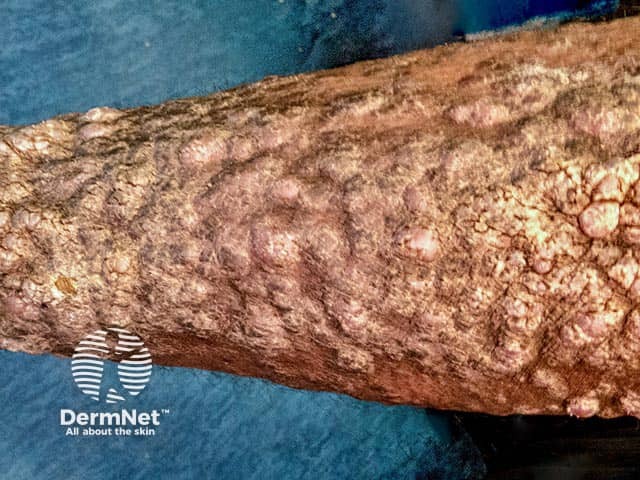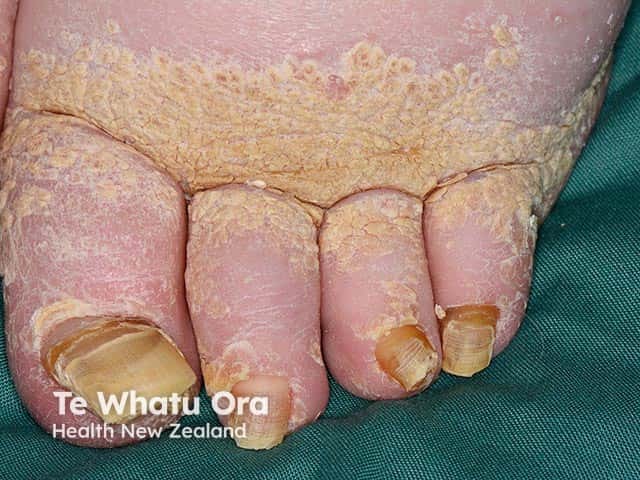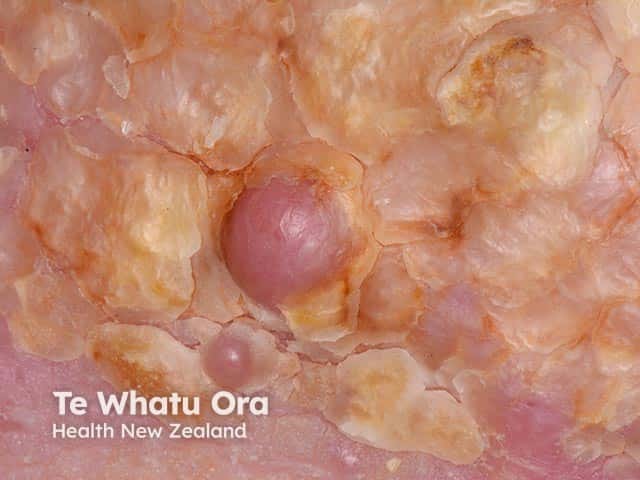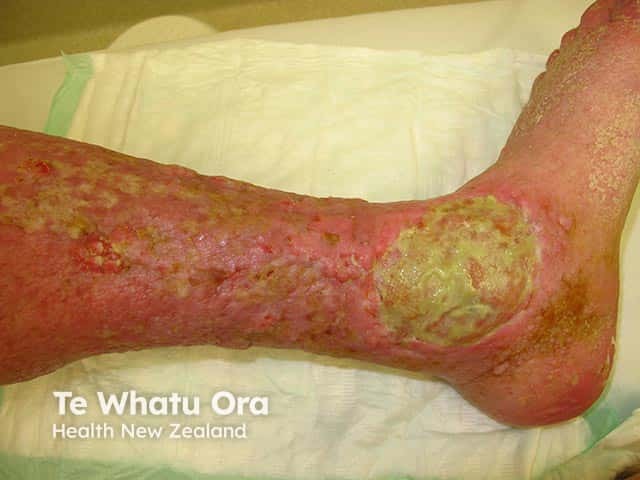Main menu
Common skin conditions

NEWS
Join DermNet PRO
Read more
Quick links
Authors: Dr Anne-Marie Aubin and Dr Thomas Barrett, Department of Dermatology, John Hunter Hospital, Australia (2023)
Reviewing dermatologist: Dr Ian Coulson
Edited by the DermNet content department
Introduction Demographics Causes Clinical features Variation in skin types Complications Diagnosis Differential diagnoses Treatment Prevention Outcome
Elephantiasis nostras verrucosa (ENV) is a rare and severe form of chronic lymphoedema. It leads to cutaneous changes including scarring, non-pitting oedema, hyperkeratosis, cobblestone-like papules, and indurated plaques on gravity-dependent body parts.
ENV predominantly affects the lower legs in a symmetrical fashion. Other sites that may be affected include the proximal thighs, abdomen, amputation stumps, and scrotum.
It is also known as lymphostatic verrucosis, elephantiasis crurum papillaris et verrucosa, ‘mossy leg’, lymphangitis recurrens elephantogenica, and lymphostatic papillomatosis cutis. ‘Nostras’ is a term used to describe the non-filiarial form of elephantiasis.

Gross hyperkeratosis and nodularity in ENV

Lymphoedema over the toes with overlying hyperkeratosis in ENV (ENV-patient2)

Close up of ENV - nodules, fibrosis and hyperkeratosis (ENV-patient2)

Ulceration over the medial malleolus with nodules, oedema, fibrosis and hyperkeratosis (ENV-patient1)
Elephantiasis nostras verrucosa is rare and can occur in males and females of all races.
It is associated with obesity and recurrent soft tissue infections. Other risk factors include malignancy, congestive heart failure, chronic venous insufficiency, previous trauma, hypothyroidism, and radiation.
Elephantiasis nostras verrucosa is caused by chronic lymphostasis, which results in protein accumulation within the interstitial fluid, inducing fibroblast proliferation. This is thought to cause progressive fibrosis of the lymphatic drainage system, leading to obstruction. As the condition progresses, ulcers may develop, leading to recurrent secondary infection.
Conditions which cause impaired lymphatic drainage and can lead to ENV include:
Striking white bright plaques and depigmentation have been reported in Fitzpatrick skin type VI. This is speculated to result from impaired melanogenesis due to chronic inflammation associated with lymphoedema.
Diagnosis is often made clinically, excluding other causes of lymphoedema on history and examination.
Patients often reveal a long history of oedema prior to the onset of fibrosis, hyperkeratosis, papules, and verrucous lesions. Recent travel, time course, and onset may differentiate from other causes such as filariasis.
Kaposi-Stemmer sign (an inability to pinch the skin overlying the base of the second toe) is indicative of lymphoedema.
Elephantiasis nostras verrucosa is difficult to treat with no known cure. The underlying cause should be treated to prevent further complications. Treatment of ENV can be conservative, medical, or surgical, depending on the severity and deformity.
Consider:
Surgical treatment may be indicated when fibrosis or nodules occur. Techniques of shaving, excision, and electrocauterisation can be used, however, the risk of scarring, infection, and non-healing ulcers should be considered.
Several case reports have found that ablative carbon dioxide laser is well tolerated and provides cosmetic and symptomatic benefits to ENV patients.
Prevention of ENV relies on early management of lymphoedema through proper local hygiene, regular moisturiser, compression, lymphatic massage, weight loss, and exercise.
Elephantiasis nostras verrucosa can result in progressive deformity of the limbs and reduced quality of life when the condition becomes debilitating.
Patients with ENV are at increased risk of malignancies such as squamous cell carcinoma, and angiosarcomas (Stewart-Treves syndrome), and should therefore be followed up to monitor for further complications.